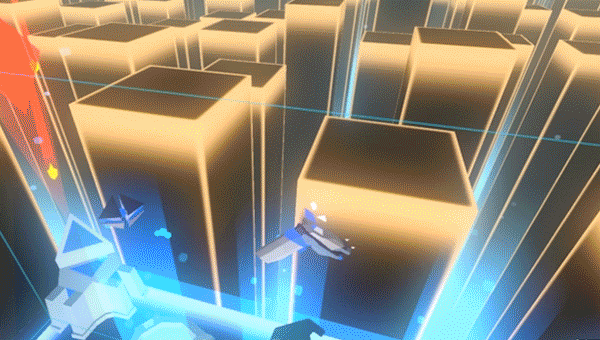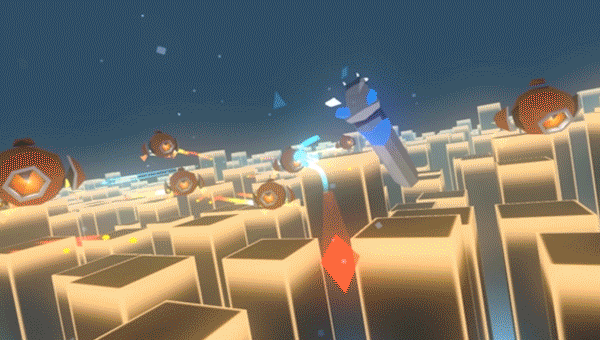A HTC Vive prototype about entering the computer and busting firewalls (in the form of laser shooting robots).
Programs Used: Unity, Blender.
My role(s)
I was the artist on this project! I worked on the models, materials, lighting and effects for the prototype. Since it was such a small team of just Ryan Murray (programmer) http://www.ryandmurray.net/ and myself we both had to work on general design and testing. We both played the hell out of it to make sure that it was excited to play and felt responsive.
VIDEO SUMMARY
Breakdown
We created Firewall VR within 7 weeks during our internship with {Adult Swim Games]. It was essentially our pet project that we worked on out of interest to develop for the HTC Vive.
In the early stages we decided that we anted to play up the idea of going into a computer when the Vive is put on. Aesthetically this established the use of hard shapes and digital sounds.
The "shatter" effect is one of the first elements we created. I knew I wanted objects to fracture into pieces, so Ryan created the system that we uses that splits the faces off of the model. The split faces as well as some particle work created a convincing shatter/explosion to the enemies.
Around this time as well, I generally established the color palette I would use with blues complimenting warm red, orange, and yellows as well as the environment of a skyline like landscape created from towers. However, even though the tower landscape was created it remained grey for a little while I experimented on what colors worked well with the robots.
Asset Creation
When it came to making the 3D assets I wanted to play up on the digital aspect and use strong geometric shapes with hard angles and vibrant colors. In an attempt to speed up time and not have to rely on textures for such simple coloring I just assigned different material groups to different parts of the models. I gave them base UV's for lightmaps however. Also since I had to keep the flying robots tri count low for the shatter effect I wanted the other models to reflect the same geometric style.
Model Stats
In order to be safe to simulate fracturing meshes and ramp up the amount of effects that could be on screen, I wanted to keep the models relatively minimal in poly/tri count.
PARTICLES
One thing that really tied the whole experience together getting the particles and effects in. In line with the rest of the aesthetic I wanted to play up the digital aspect which led me to using triangle planes for more impact like effects and cubes for more ambient effects. These elements along with a few trail renderers that were used on projectiles and the robot really helped solidify the feeling of being in a virtual reality.
As well as helping with the feel, effects were used to help signify things like when the gun was charged, by the blue energy becoming electric, and indicating the paths of the bullets in the scene.












